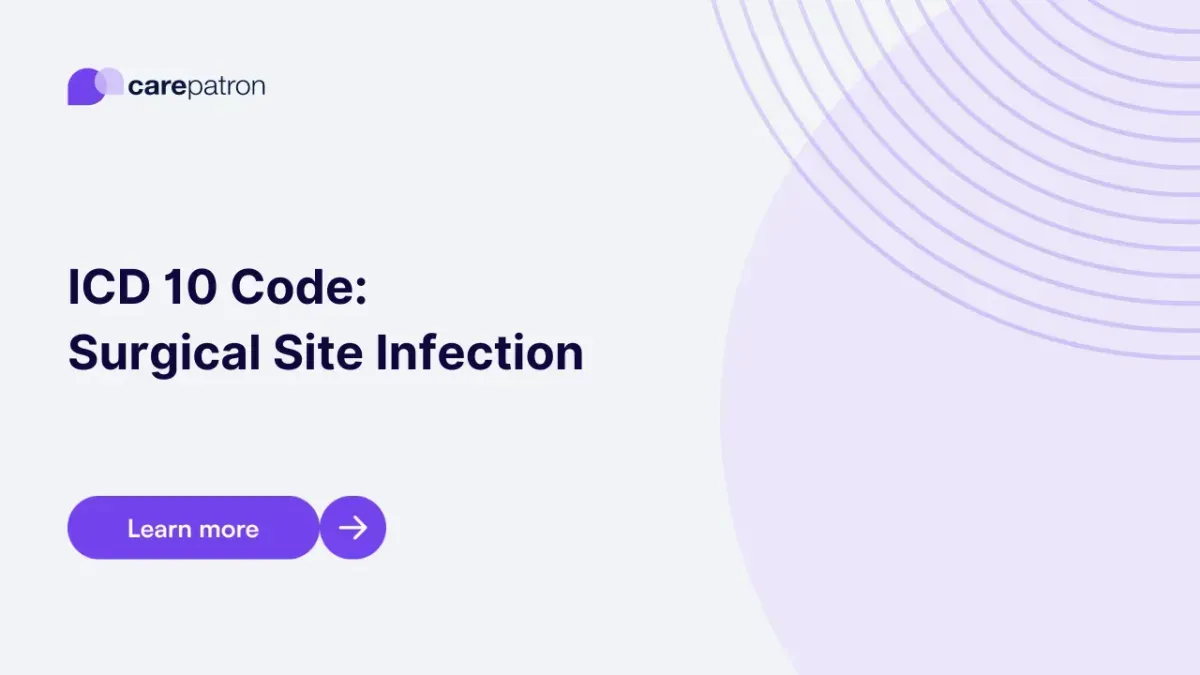
Surgical Site Infection ICD-10-CM Codes
Explore ICD-10-CM codes for surgical site infections, including superficial, deep incisional, and device-related postprocedural complications.
Use Code
Commonly asked questions
A Surgical Site Infection ICD-10-CM code should be used when an infection is documented to have developed at or near the site of a recent surgical procedure. This includes superficial, deep incisional, or organ/space infections following a procedure, especially when clinical signs like redness, discharge, fever, or swelling are present.
Treatments for surgical site infections (SSIs) typically include targeted antibiotics, wound cleaning, and, in more severe cases, surgical drainage or removal of prosthetic devices or implants. The specific therapy depends on the depth of infection and whether the infectious agent or foreign body is identified.
A diagnosis code for surgical site infection signifies that a patient has developed an infection directly linked to a recent surgical procedure. These ICD-10-CM codes help classify the infection type, location, severity, and any involvement of devices or grafts.
EHR and practice management software
Get started for free
*No credit card required
Free
$0/usd
Unlimited clients
Telehealth
1GB of storage
Client portal text
Automated billing and online payments
